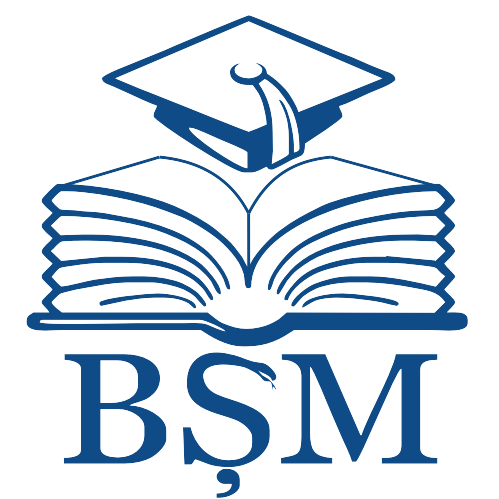|
|
- IRMS - Nicolae Testemitanu SUMPh
- REVISTE MEDICALE NEINSTITUȚIONALE
- Sănătate Publică, Economie şi Management în Medicină
- Sănătate Publică, Economie şi Management în Medicină 2024
- Sănătate Publică, Economie şi Management în Medicină Nr. 5(102) / 2024
Please use this identifier to cite or link to this item:
http://hdl.handle.net/20.500.12710/30862
| Title: | Hipogonadismul bărbatului în vârstă. Repere de diagnostic și tratament |
| Other Titles: | Late-onset hypogonadism. Diagnostical and treatment landmarks
Возрастной гипогонадизм. Диагностические и лечебные ориентиры |
| Authors: | Dumbrăveanu, Ion
Arian, Iurie
Ghenciu, Victoria
Creciun, Mariana
Ceban, Emil |
| Keywords: | age-related hypogonadism;„late-onset” hypogonadism;functional hypogonadism;hormone replacement therapy |
| Issue Date: | 2024 |
| Publisher: | Asociația Obștească "Economie, Management și Psihologie în Medicină" din Republica Moldova |
| Citation: | DUMBRĂVEANU, Ion; Iurie ARIAN; Victoria GHENCIU; Mariana CRECIUN and Emil CEBAN. Hipogonadismul bărbatului în vârstă. Repere de diagnostic și tratament. Sănătate publică, economie şi management în medicină. 2024, nr. 5(102), p. 140-146. ISSN 1729-8687. https://doi.org/ 10.52556/2587-3873.2024.5(102).21 |
| Abstract: | Rezumat
Hipogonadismul masculin asociat vârstei este cea mai controversată formă de hipogonadism și o problemă neelucidată.
Prevalența sa nu este cunoscută, cifrele estimative arătând că
cel puțin 1 din 5 bărbați după vârsta de 40 ani și circa 80% din
cei cu comorbidități pot avea hipogonadism. Hipogonadismul
cu debut tardiv al bărbatului nu are criterii definite ale vârstei
și poate include în mecanismele sale declanșatoare și evolutive
elemente de hipogonadism primar, datorat funcției testiculare
insuficiente, și hipogonadism secundar. La elaborarea acestui
articol au fost consultate review-urile a 40 de studii analitice și
ghiduri internaționale ale Academiei Europene de Andrologie
și ale Societăților de Endocrinologie și Urologie. Hipogonadismul cu debut tardiv este dependent de vârstă și de starea de
sănătate a bărbatului. Scăderea nivelului de testosteron poate
fi consecința maladiilor cronice, a diabetului, insuficienței
de organ sau a obezității. Alte cauze pot fi condiționate de
prezența inflamației cronice sistemice. Pacienții în vârstă
cu semne ale deficitului de testosteron necesită a fi abordați
personalizat pentru a stabili prezența unor forme reversibile/
funcționale de hipogonadism, care pot fi remediate altfel
decât terapia de substituție cu testosteron. Administrarea de
testosteron este o opțiune de tratament la confirmarea clinică
și biochimică a hipogonadismului cu evaluarea potențialelor
beneficii și riscuri.
Summary
Late-onset hypogonadism (LOH) is the most controversial
form of hypogonadism and an unsolved problem. Its prevalence is unknown, it is estimated as being at least 1 in 5 men
after 40 years, and about 80% of those with comorbidities
may have hypogonadism. LOH does not have age-defined
criteria and may be included in its start-out and developing
mechanisms elements of primary hypogonadism due to insufficient testicular function and secondary. When preparing this
article, the reviews of 40 analytical studies and international
guidelines of the European Academy of Andrology and the
Societies of Endocrinology and Urology were consulted.
This type of hypogonadism is dependent on the age and
men’s health status. Decreased testosterone levels can be the
result of chronic disease, diabetes, organ failure, or obesity.
Or because of the presence of chronic systemic inflammation.
Older patients with signs of testosterone deficiency need an
individual approach to establish the presence of a reversible/
functional form of hypogonadism that can be ameliorated
with other remedies than testosterone replacement therapy.
After clinical and biochemical confirmation of hypogonadism,
testosterone treatment recommended recommended only with
an evaluation of potential benefits and risks
Резюме
Возрастной мужской гипогонадизм является наиболее
спорной формой гипогонадизма и нерешённой проблемой.
Его распространенность неизвестна, цифры показывают,
что по крайней мере 1 из 5 мужчин после 40 лет, и около
80 % людей с коморбидностью могут иметь гипогонадизм.
Возрастной мужской гипогондизм не имеет возрастных
лимит и может включать в свои механизмы начала и
эволюции элементы вторичного и первичного гипогондизма из-за недостаточной тестикулярной функции.
При подготовке этой статьи были использованы обзоры
40 аналитических исследований и международные рекомендации Европейской академии андрологии и обществ
эндокринологии и урологии. Развитие возрастного гипогондизма зависит от возраста и здоровья мужчины. Снижение уровня тестостерона может быть результатом
хронического заболевания, диабета, отказа органов или
ожирения. Другие причины могут быть вызваны наличием
хронического системного воспаления. Мужчины в возрасте с признаками дефицита тестостерона нуждаются в
индивидуальном подходе для того чтобы установить наличие обратимых/функциональных форм гипогонадизма
к которым можно применить альтернативные методы
за исключением заместительной терапии с тестостероном. Тестостерон-заместительная терапия является
методом выбора после клинического и биохимического подтверждения гипогонадизма после оценки потенциальных
преимуществ и рисков. |
| metadata.dc.relation.ispartof: | Sănătate Publică, Economie şi Management în Medicină |
| URI: | https://revistaspemm.md/wp-content/uploads/2024/10/2024_CM5102_2024_octombrie_COLOR.pdf
https://doi.org/ 10.52556/2587-3873.2024.5(102).21
https://repository.usmf.md/handle/20.500.12710/30862 |
| ISSN: | 1729-8687 |
| Appears in Collections: | Sănătate Publică, Economie şi Management în Medicină Nr. 5(102) / 2024
|
Items in DSpace are protected by copyright, with all rights reserved, unless otherwise indicated.
|


